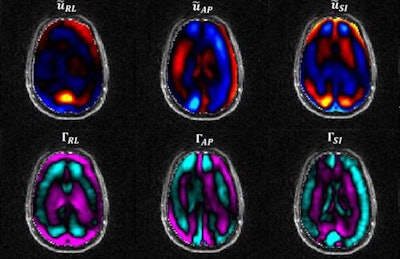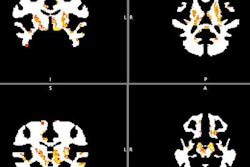
MR elastography (MRE) is helping researchers at Washington University in St. Louis take a closer look at how layers of membranes react to traumatic brain injury (TBI), according to a study published online March 21 in the Journal of Biomechanical Engineering.
When a TBI occurs, the membranes cushion the brain and absorb shock to prevent damage. However, it remains unknown to what degree the membranes react and whether that reaction varies from person to person.
The goal of the study was to determine the extent to which these layers of membranes protect the brain, explained senior author Philip Bayly, PhD, chair of the university's mechanical engineering and materials science department, in a statement. To do so, the researchers used a vibrating pillow to introduce tiny skull vibrations and sensors embedded in a mouthguard to measure them during the MRE exams. They then measured brain motion using MRI, and compared the results in the volunteers with those in a gelatin model (J Biomech Eng, March 21, 2017).
The membrane layers in the six subjects significantly delayed and weakened the transfer of motion from the skull to the brain, compared with the gelatin model, the researchers found.
 Images show displacement of brain tissue (top row) and changes in shape (bottom row). Courtesy of Bayly Lab and Washington University in St. Louis.
Images show displacement of brain tissue (top row) and changes in shape (bottom row). Courtesy of Bayly Lab and Washington University in St. Louis.Bayly and colleagues are now quantifying how much protection the membranes create. The next steps include developing a more streamlined MRE method, which could enable a larger study with more subjects.
"This would allow us to examine factors such as age or gender as variables when it comes to traumatic brain injury, and see who might be more susceptible to such injuries," Bayly said.



















